Bay Area Native Plants: 10 Gorgeous Species To Grow
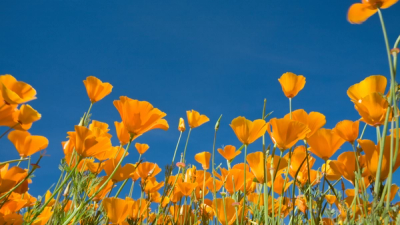
In this post, we will introduce you to some Bay area native plants which can add beauty and functionality to your garden. Whether your yard is soaked in full sun or tucked in shade, there's a plant that can easily thrive.
The San Francisco Bay area has nine counties, including the three major cities of San Francisco, San Jose and Oakland, and holds a special place in the state of California. This place is not only celebrated for its popular landmarks like the Golden Gate Bridge and Half Moon Bay, but also for being a biodiversity hotspot. Various unique plants populate Bay Area landscapes. For example, the California Poppy (Eschscholzia californica), the state flower, blankets hillsides with vibrant shades of orange. On the other side, giant redwood trees are known for their towering heights of 400 feet, living for about 4000 years alongside iconic Oak trees.
In this post, we will introduce you to some Bay area native plants which can add beauty and functionality to your garden. Whether your yard is soaked in full sun or tucked in shade, there's a plant that can easily thrive.
But before we dive in...

What are Native Plants?
Bay Area native plants are indigenous species that have historically thrived in the region that we now call the "Bay Area". These plants have been present in the area long before settlers arrived and these species have supported the livelihood of Californians for many centuries. By co-evolving with the animal and microbial life living in the region, these plants have acted as a foundation for the local ecosystems.
Integrating Bay Area's native plants into your garden is a thoughtful way to create attractive outdoor areas that also serve as natural habitats for local wildlife. Also, selecting to grow these plants can enable you to design a water-wise garden that is is free from chemicals and requires minimal maintenance. In short, growing native plants is an action that can align with eco-friendly principles.
Why are Bay Area Native Plant Species Important?

There has been an ongoing and incredible loss of animal life worldwide over the past 150 years. This is a tragedy that has affected almost every major group of wildlife, including the many bees, butterflies, birds and other beneficial pollinators that allow our natural world to function. A leading driver of this crash is land mismanagement: as humans, on private land, we've removed the native trees and herbaceous perennial plants which our local wildlife needs and have replaced them with non native species that do little or nothing to help.
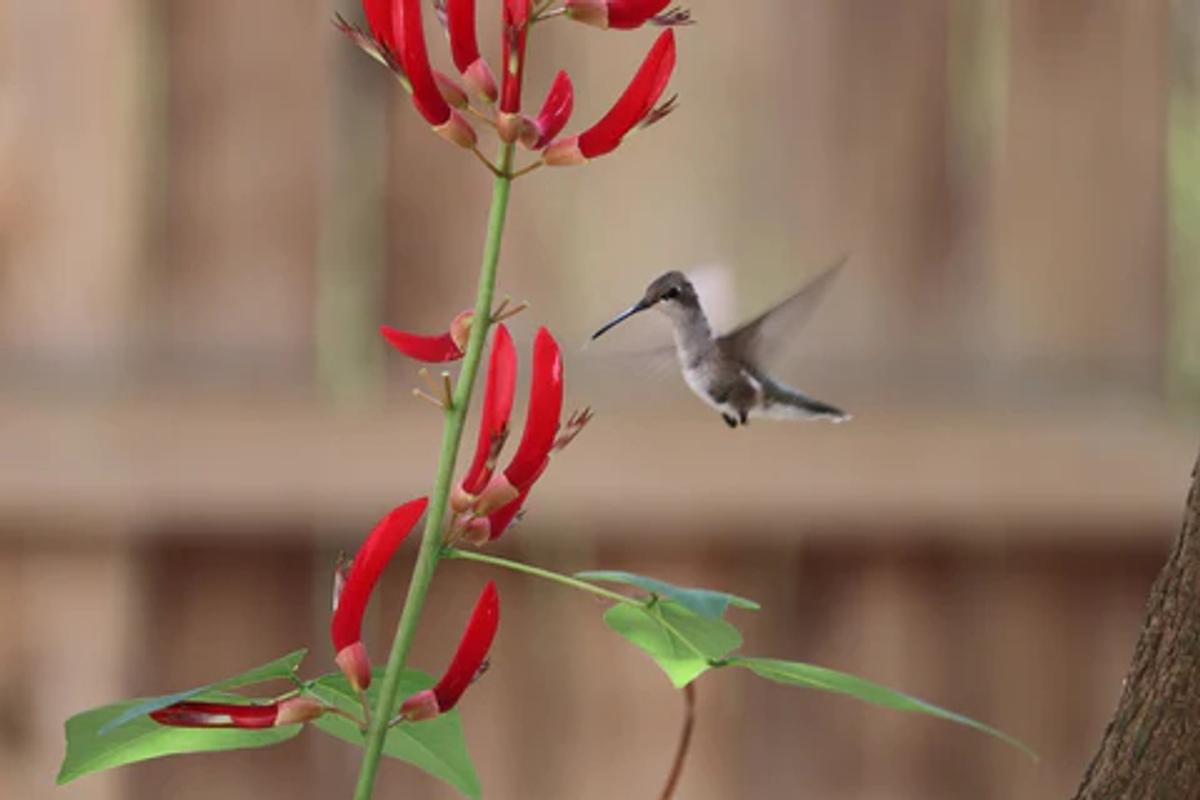
In contrast, the trees, shrubs, grasses, and flowers that are native to specific areas are especially well-adapted to provide food sources and shelter for many beneficial insects, birds, and other wildlife. These plants also tend to cycle nutrients into the soil more efficiently, and retain more storm water than any kind of turf grass. Many species of native plants can survive in poor soil conditions, are drought tolerant and deer resistant once established, which also makes them a great choice for most gardeners. Simply by adding some Bay Area native plants to garden beds or other landscaping efforts, we can directly help to reduce atmospheric CO2, create fertile soil, and reestablish a healthy local ecosystem.
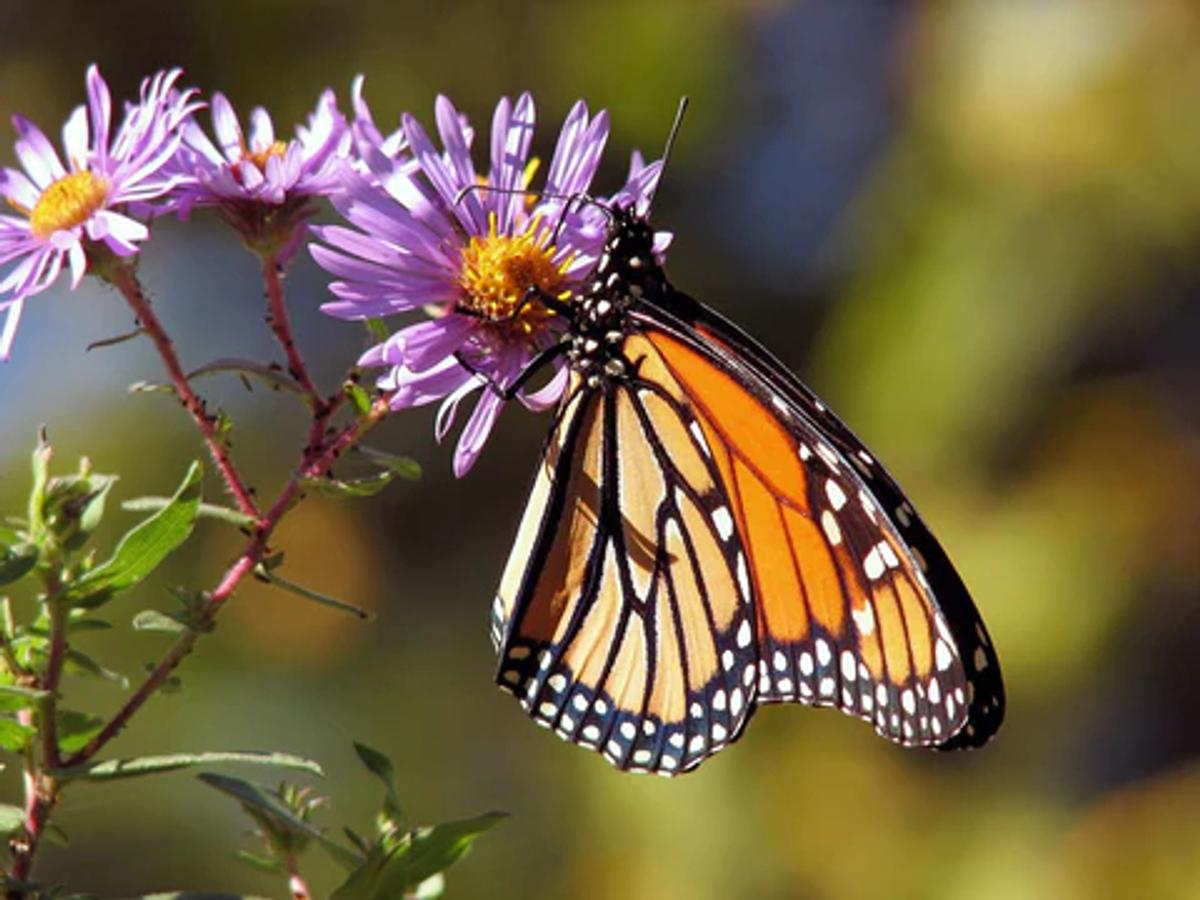
Bay Area Native Plants for Landscaping
Below, I share just a handful of Bay Area native plants, and split them into two major groups based on sun exposure: Full Sun and Partial Shade. Each one of the plants listed will attract bees, butterflies, and many other beneficial insects and wildlife.
Native Plants for Full Sun
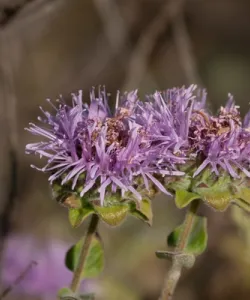
Coyote Mint is a perennial wildflower that is found exclusively in California. It grows like a small shrub reaching up to 2 feet tall and 2 feet wide, with showy ball-shaped pinkish purple flowers that bloom in summers. These blossoms are nectar-rich and attract a wide range of bees and butterflies. As the name suggests, the plant's leaves emit a strong minty scent, which were once used by the Native Americans to address common ailments like sore throat and stomach issues. Coyote Mint is deer resistant, easy to grow and thrives well in full sun and dry soil conditions. Its compact growing habit makes it a versatile choice for borders, herb gardens, rock gardens, and container planting.
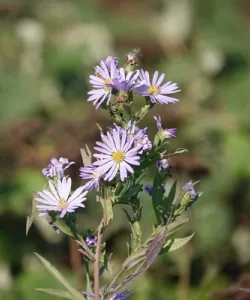
California Aster or Pacific Aster is a drought-tolerant herbaceous perennial native to the state of California, despite its Latin name "Chile". The plant has a bushy growth habit and can reach up to 1.3 to 3.3 feet tall, a perfect height for use in borders or container gardening. During mid-summer to fall, it bursts into tiny lavender or white daisy-like flowers, making it a late-season nectar buffet for pollinators like bees, butterflies, and a few moth species. California Aster also acts as a host plant for some butterfly species like Northern Checkerspot and Pearl Crescent. Apart from its aesthetic looks and ecological contributions, California Aster is also known for its remarkable adaptability. It can thrive in different soil types and can tolerate full sun to partial shade.
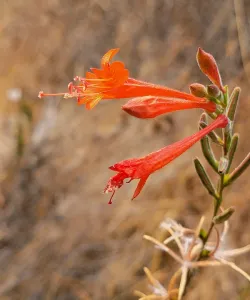
California Fuchsia is stunning California native plant that offers a host of benefits. It is deer-resistant, drought-tolerant, fast growing and low maintenance. The real allure of this plant lies in its ability to attract hummingbirds with its reddish-orange tubular flowers in late fall and summer, when other plants go dormant. Bees are also drawn to its nectar-rich blooms. The silvery green foliage offers a perfect contrast to the vibrant blooms and adds visual interest to your garden. It typically grows 0.25-1.5 feet tall and 2-3 feet wide with a spreading habit. California Fuchsia thrives in full sun but appreciates some shade during the hotter months of the year. It can handle clay and sandy soils with very low watering needs, making it an ideal choice for a water-wise garden.
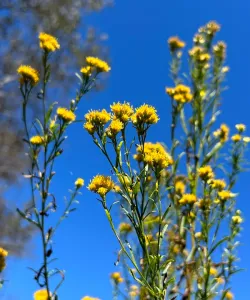
Western Goldenrod or Western Goldentop is one of the most common wildflowers in California. In the wild, it is usually found at elevations below 5000 feet in damp grounds. along streams, rivers and wetlands. The plant is a multi-stemmed perennial that spreads from underground rhizomes . It usually grows from 4 to 6 feet tall with thin, upright stems and long grayish-green leaves. Clusters of small yellow flower heads form at the ends of the branches during late summer to autumn, which attract many bees and other pollinators. The fuss-free plant grows well in full sun to part shade gardens and is tolerant of any type of soil as long as sufficient moisture is available. Besides supporting local biodiversity, Western Goldenrod is also great for combating soil erosion, making it an ecological hero.
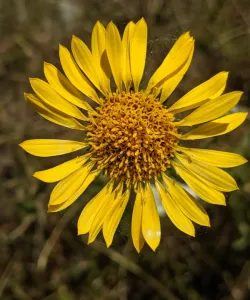
Hairy Gumweed, also known as Hairy Gumplant, is a perennial flowering herb which belongs to the daisy family. The plant can grow upto 8 feet tall and produces bright yellow flowers from late summer until early fall that look like miniature suns. These flowers draw in bees and butterflies for a late-season nectar feast. The narrow, lance shaped leaves display shades of yellow to red and are covered in fine hair, giving the plant its moniker "hairy". This versatile plant grows well in full sun to part shade gardens and thrives well in any well-draining soils. Its low-maintenance and hardy nature makes it a perfect choice for beginners and seasoned gardeners.
Native Plants for Part Shade
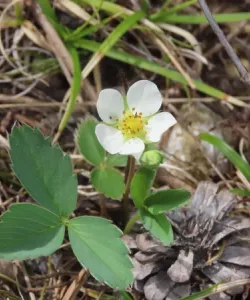
Wild Strawberry is often mistaken for a weed, but is one of the most ecologically beneficial native plants you can introduce to your garden. It is an easy-to-grow perennial that closely resembles cultivated strawberry plants with its three-leaf arrangement and dainty white flowers. In late spring or early summer, these white flowers transform into small, intensely fragrant and sweet red strawberries. These strawberries are a favorite food source for many birds, animals and pollinators like sweat bees and carpenter bees.
Wild Strawberry's tidy, mounding growth pattern and low height (only 3-9 inches) makes it an excellent choice for edging, container gardening or as a ground cover. The plant thrives well in areas with full sun to partial shade and is tolerant of a variety of soil types. As a bonus, it adds a beautiful color to your garden with its bright red hues.

Flowering Currant, also known as Red-flowering Currant, is a fast growing, deciduous flowering shrub. It has a round spreading habit and typically grows 3-6 feet meters tall. The plant is a pollinator magnet as it bears clusters of pinkish red flowers which attract different types of bees and butterflies. These flowers turn into small edible berries which are relished by particular bird species. Flowering currant grows best in full sun to partial shade and can handle different types of soils. As fall arrives, its dark green leaves transform into stunning shades of rust and yellow. Besides its ecological benefits, Flowering Currant is also known for its medicinal uses.
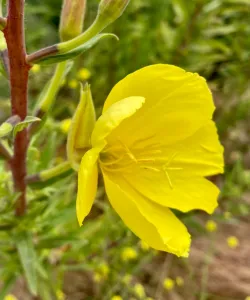
Oenothera elata is commonly known as Tall evening Primrose or Hooker's Evening Primrose. It is one of the tallest species in the Evening Primrose family. This plant grows up to 3-5 feet tall and 2-3 feet wide. During early-summer to early-fall, it produces sweet-scented bright yellow flowers with four heart-shaped petals. As with other evening primroses, the flowers open in the evening until late morning and close up during the mid-day. The funnel shape of the flowers attract hummingbirds while small birds like goldfinches relish the plant's seeds during the Fall. This hardy species thrives well in part shade to full sun conditions and prefers any medium to slow draining soils.
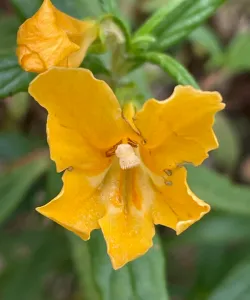
Bush Monkey Flower is native Californian species and a must-have in any Bay area garden. The bushy, evergreen shrub grows 3-5 feet tall and 5 feet wide featuring narrow, lance-shaped leaves. These leaves produce a protective sticky resin, earning its other name, the sticky monkey flower. The trumpet-shaped flowers come in many cheerful hues like yellow, orange-red and salmon-orange. Its name "Monkey flower" is inspired by the fact that these flowers resemble a monkey's face. The plant is a favorite choice for many pollinators due to its long blooming season period (extending from Spring to Summer) and its wide array of colors. It grows well in full sun to part shade areas, and is tolerant of any well-draining soil types. Notably, the Bush Monkey Flower has been honored with the prestigious "Award of Garden Merit" by the Royal Horticultural Society for its ecological contributions.
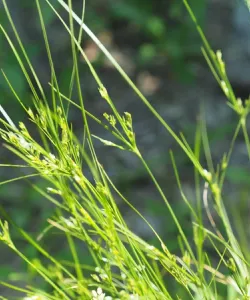
Common Rush or California Gray Rush is an evergreen perennial that is naturally found in marshy and other wet areas. It grows dense clumps of narrow, straight grayish-blue leafless stems which resemble grass. Clusters of golden-brown flowers sprout from the sides of the stems (from Spring to Fall) which attract different types of moths and butterflies. The plant grows up to 18-24 inches tall and is highly adaptable. It can thrive well in almost any kind of environment, ranging from full sun to shady areas and wet to dry soils. Landscape artists typically use this plant to add textural beauty to semi-formal and water gardens. Its incredible versatility and pest-free nature makes it a true gardener's delight.
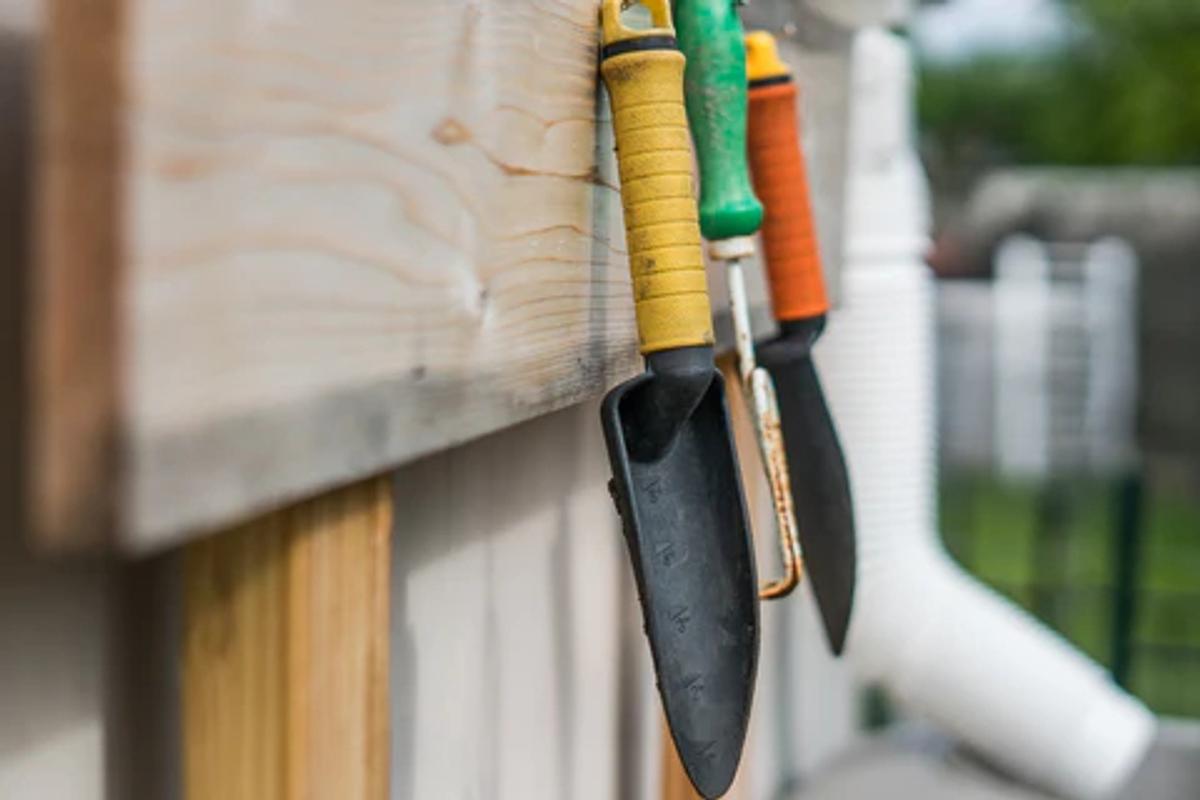


Share this article


